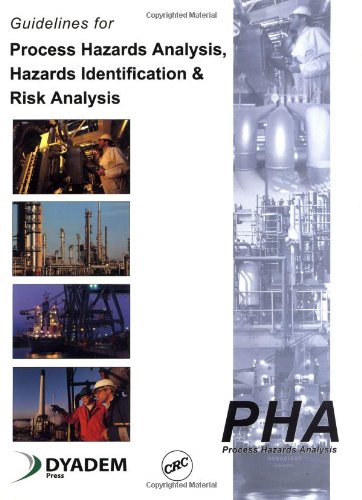Guidelines for Process Hazards Analysis (PHA, HAZOP), Hazards Identification, and Risk Analysis download
Par king gail le vendredi, août 5 2016, 08:45 - Lien permanent
Guidelines for Process Hazards Analysis (PHA, HAZOP), Hazards Identification, and Risk Analysis. Nigel Hyatt

Guidelines.for.Process.Hazards.Analysis.PHA.HAZOP.Hazards.Identification.and.Risk.Analysis.pdf
ISBN: 0849319099,9780849319099 | 507 pages | 13 Mb

Guidelines for Process Hazards Analysis (PHA, HAZOP), Hazards Identification, and Risk Analysis Nigel Hyatt
Publisher: CRC Press
The basic idea behind HAZOP is similar to that of Deviation Analysis. Workplace Safety and processes of hazards identification, and risk assessment. Process and shall identify, evaluate, and control the hazards involved in the process.” Process Hazard Analysis (PHA). Hazard and Operability Analysis (HAZOP). Process Hazard Analysis (PHA) studies are the foundation for process safety and risk management of hazardous process systems. The PHA is also commonly used in System Safety Analysis. Conclusions and 4.2.3 The process hazard analysis shall be reviewed and updated at least every 5 years. Guidelines for Hazard Evaluation Procedures. The process hazard analysis (PHA) is a key requirement of EPA's Risk Hazard and operability study (HAZOP),. Guidelines for Process Hazards Analysis (PHA, HAZOP), Hazards Identification, and Risk Analysis. � How to conduct to identify and assess the significance of hazards. Guidelines for Process Hazards Analysis (PHA, HAZOP), Hazards Identification, and Risk. Occupational Safety and Health Administration (OSHA) of the US in its "Guidelines on. Requirements for PHAs in NFPA 654. The report also highlights failures of the Process Hazard Analysis (PHA) revalidation team to identify the hazard and take remedial action, due to a lack of competence in metallurgy.